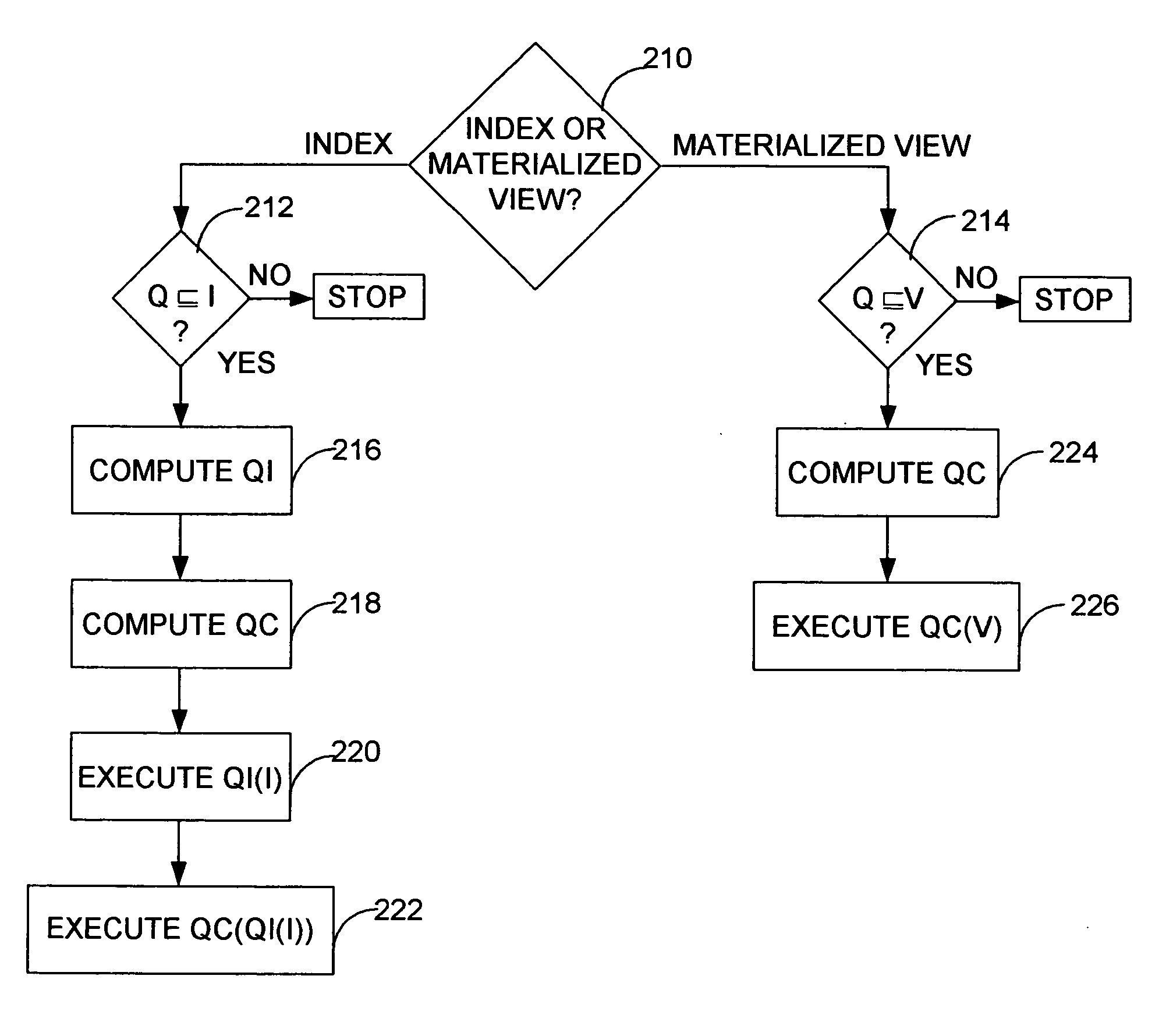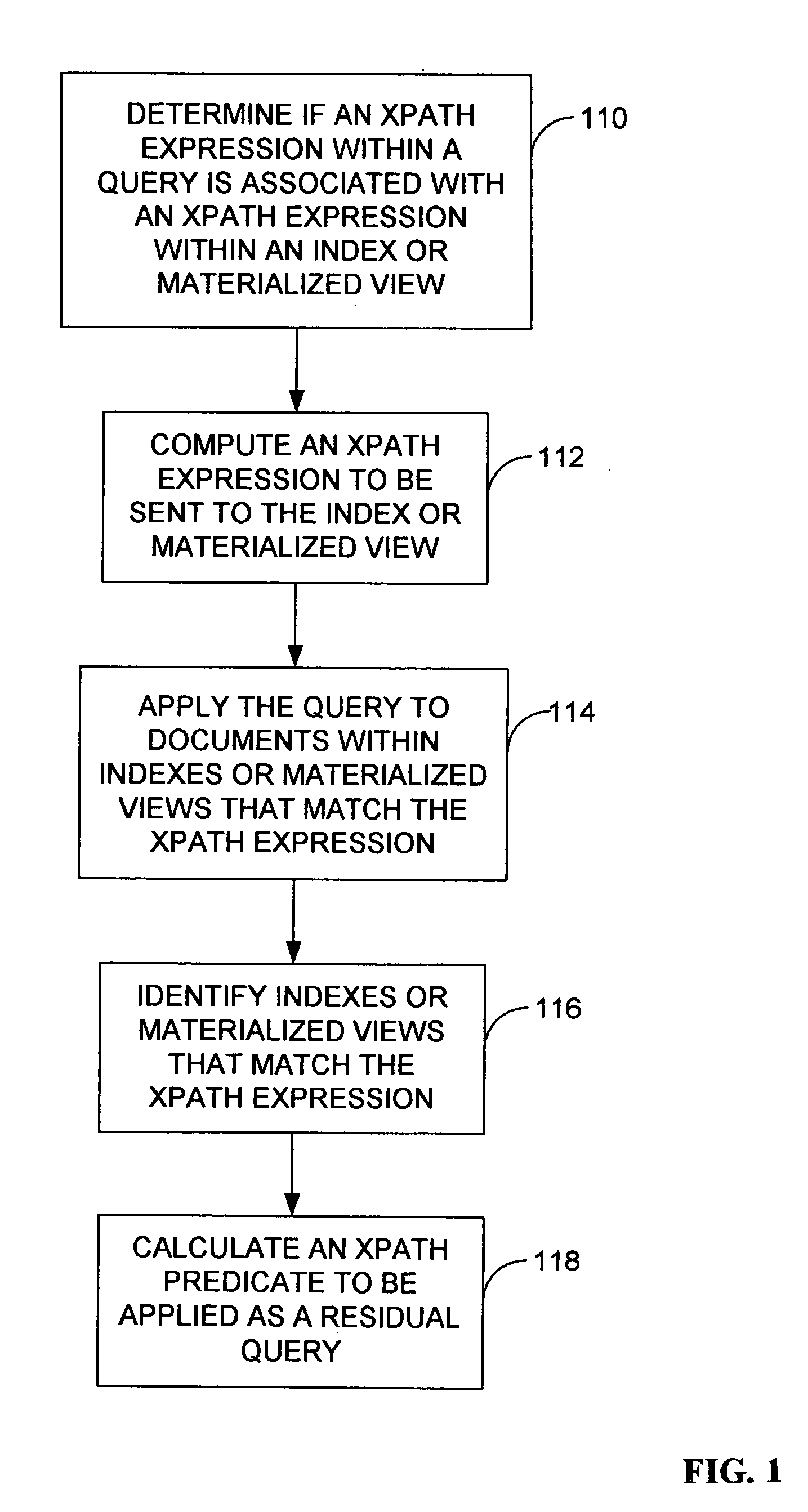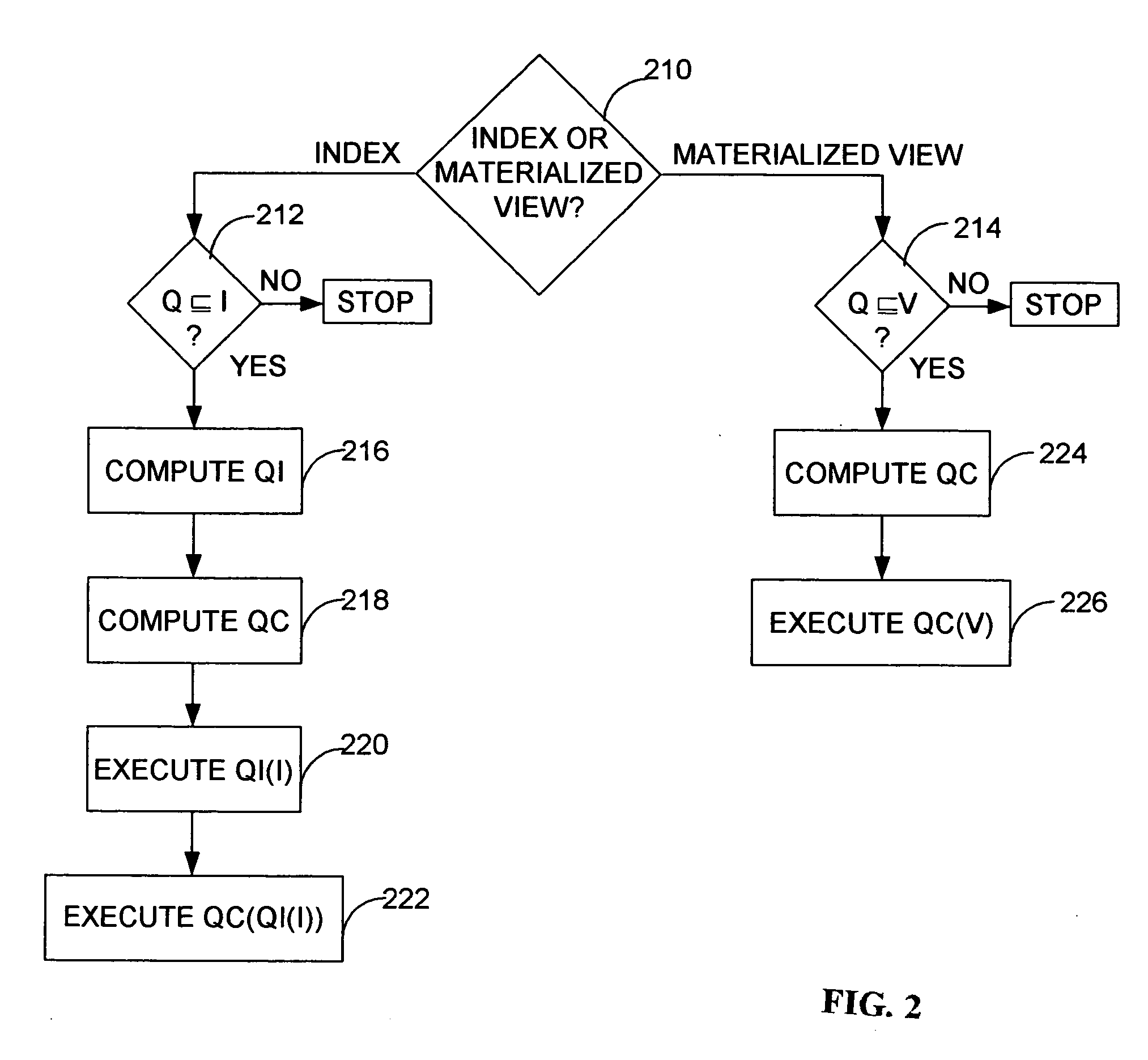XPath containment for index and materialized view matching
a materialized view and index technology, applied in the field of hierarchical document querying, can solve the problems of inapplicability to complex xpath expressions involving nested predicates and branching, inability to express disjunction, comparison predicates, or any axis,
- Summary
- Abstract
- Description
- Claims
- Application Information
AI Technical Summary
Benefits of technology
Problems solved by technology
Method used
Image
Examples
example 4.1
[0092] The matching of P and Q of FIG. 6 proceeds as follows. First, extract the filters using the algorithm in FIG. 7, producing trees P′ and Q′. Next, the containment algorithm of FIG. 7 computes the mapping M={(XPS1, XPS4), (XPS2, XPS5), (XPS3, XPS6)}. While matching the @price PXR node (XPS3), to the @price query node (XPS6), the algorithm notices that there exists an associated PXR filter XPS3>60 and looks for filters associated with the XPS6 node. It finds the filter XPS6>100, which is more restrictive than the PXR filter. As a result, it adds the mapping (XPS3, XPS6) into M.
[0093] Matching Complex Filters
[0094] To match a complex PXR filter (i.e., expression of form p1 op p2, where both p1 and p2 are XPS nodes) the invention needs to map both nodes before doing the match. Node-pairs (p1, q1) and (p2, q2) are built, where p1 and p2 are PXR nodes, and q1 and q2 are query nodes. If the PXR filter is not implied by any query filter involving q1 and q2, then (p1, q1), (p2, q2), ...
example 4.2
[0098] Consider a hierarchy of employees, where each employee element has salary and bonus attributes, and zero or more employee subelements. The following “cross-employee imbalance” view: P= / / employee[. / / employee / @salary2 can match to either XPS12 or XPS15. In the first case, XPS3 can match to XPS13 or XPS16, XPS5 to XPS15 or XPS20, and XPS7 can map to one of 5 XPS nodes of Q, for a total of 20 combinations. In the second case there are only two possible mappings. In general, the number of mappings is exponential in the size of P tree, since the tree contains both branching and descendant navigations.
[0099] Next, a compact data structure called a mapping DAG is presented, that encodes a set of all mappings and is polynomial in the size of the expression trees. For example, it encodes all mappings for the above example with just 15 node-pairs. The structure also improves running time of the algorithm, by eliminating the steps that produce redundant node-pairs.
Definition 8 (Mappin...
example 4.3
[0111] Consider again P and Q trees of FIG. 8. First, match the root, then call matchStep(XPS2, XPS 12), and XPS2 node becomes the root of the mapping DAG. Since XPS2 has “descendant” axis, the invention will attempt to map it to XPS12, . . . , XPS21. Only two calls to matchChildren( ) return true. Next, create 2 node-pairs (XPS2, XPS12) and (XPS2, XPS15) and add them as children of the XPS2 node.
[0112] First consider the (XPS2, XPS12) node-pair. Node a1 has the predicate [XPS3 and XPS5] (recall, that filter extraction replaces “>” node with an “and”) and the next child XPS7. Thus, the node-pair becomes the parent of two nodes: AND and XPS7. AND node in turn has two children XPS3 and XPS5. Since XPS2 was mapped to XPS12, node XPS3 can be mapped to XPS13 or XPS16. Thus, add (XPS3, XPS13) and (XPS3, XPS16) as children of XPS3. The rest of the branch is constructed is similar fashion. Now consider (XPS2, XPS15) node-pair. It has the same set of children as its sibling, however in this...
PUM
 Login to View More
Login to View More Abstract
Description
Claims
Application Information
 Login to View More
Login to View More - R&D
- Intellectual Property
- Life Sciences
- Materials
- Tech Scout
- Unparalleled Data Quality
- Higher Quality Content
- 60% Fewer Hallucinations
Browse by: Latest US Patents, China's latest patents, Technical Efficacy Thesaurus, Application Domain, Technology Topic, Popular Technical Reports.
© 2025 PatSnap. All rights reserved.Legal|Privacy policy|Modern Slavery Act Transparency Statement|Sitemap|About US| Contact US: help@patsnap.com



